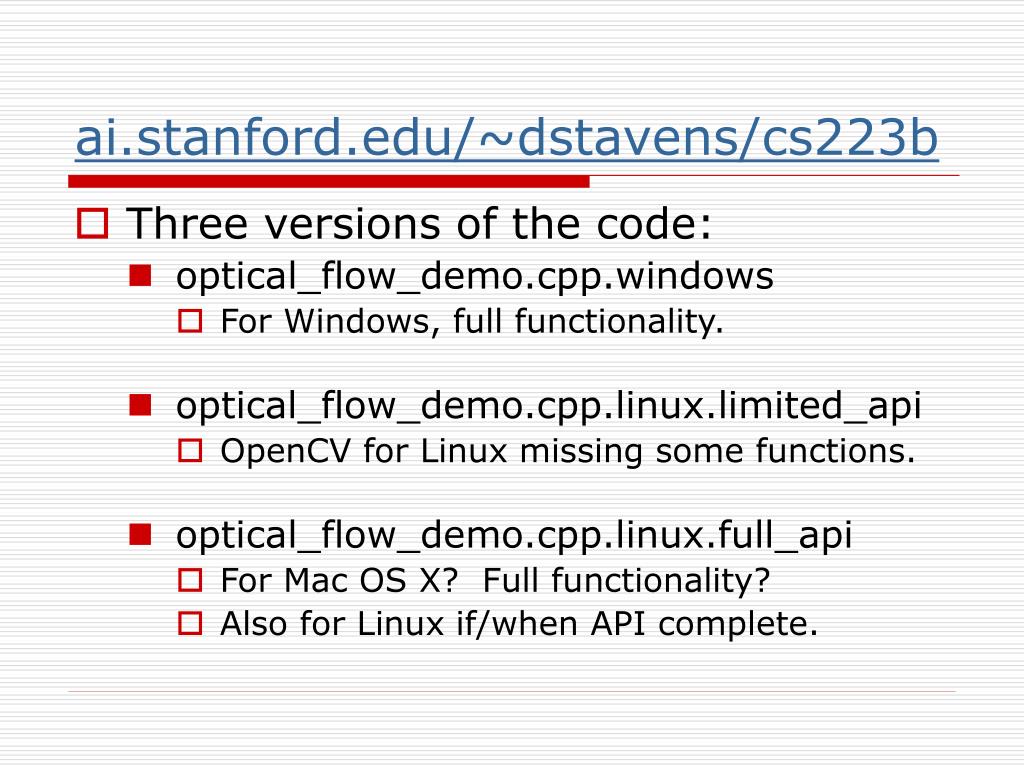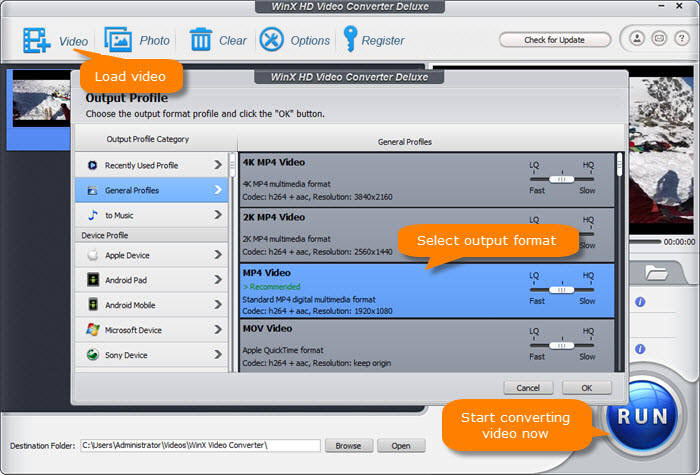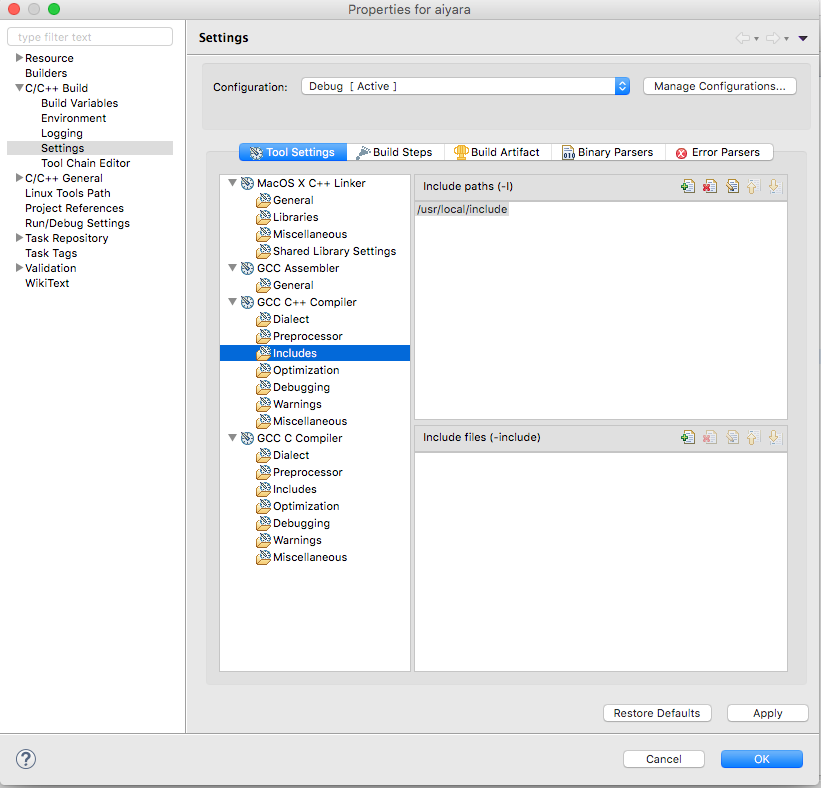
- #VIDEO CODEC OPENCV FOR MAC OSX CODE#
- #VIDEO CODEC OPENCV FOR MAC OSX DOWNLOAD#
- #VIDEO CODEC OPENCV FOR MAC OSX WINDOWS#
Place it in the same directory as the sample input_video.mp4 To do this we need to have a test python code, call it test.py. write out a new video file (can be.avi or.mp4 etc.).If the package cv2 is imported ok with no errors, and the cv2 version is printed out, then we are all good! Issue these in the IPython Console: import cv2 To confrim that Anaconda is now able to import the OpenCV-Python package (namely, cv2), Use the FFMPEG utility (to read/write/process videos).We need to test whether we can now do these in Anaconda (via Spyder IDE): This is it we are done! FFMPEG is ready to be used!
#VIDEO CODEC OPENCV FOR MAC OSX WINDOWS#
Right-click on "My Computer" (or "This PC" on Windows 8.1) -> left-click Properties -> left-click "Advanced" tab -> left-click "Environment Variables." button.Add a new User Variable to point to the OpenCV (either x86 for 32-bit system or 圆4 for 64-bit system.) I am currently on a 64-bit machine.Īppend %OPENCV_DIR%\bin to the User Variable PATH.įor example, my PATH user variable looks like this.īefore: F:\Users\Johnny\Anaconda C:\Users\Johnny\Anaconda\ScriptsĪfter: F:\Users\Johnny\Anaconda C:\Users\Johnny\Anaconda\Scripts %OPENCV_DIR%\bin BUT, we still need to do a little bit more work to get FFMPEG (video codec) to work (to enable us to do things like processing videos.) To this Anaconda directory (the beginning part might be slightly different on your machine): F:\Program Files\Anaconda2\Lib\site-packagesĪfter performing this step we shall now be able to use import cv2 in Python code. Our goal is to copy and paste the cv2.pyd file to this directory (so that we can use the import cv2 in our Python codes.).įrom this OpenCV directory (the beginning part might be slightly different on your machine): # Python 2.7 and 64-bit machine: F:\opencv\build\python\2.7\圆4# Python 2.7 and 32-bit machine: F:\opencv\build\python\2.7\x84 F:\Program Files\Anaconda2\Lib\site-packages in my case) contains the Python packages that you may import. The Anaconda Site-packages directory (e.g. In my case, I've extracted the package (essentially a folder) straight to my F drive. I am on Python 2.x and OpenCV 2.x - mainly because this is how the OpenCV-Python Tutorials are setup/based on.
#VIDEO CODEC OPENCV FOR MAC OSX DOWNLOAD#
Check out Anaconda to get it installed.įirstly, go to the official OpenCV site to download the complete OpenCV package. It seems to be recommended everywhere in the scientific community.
#VIDEO CODEC OPENCV FOR MAC OSX CODE#
Make code to recognize the faces &Result.Īnaconda is essentially a nicely packaged Python IDE that is shipped with tons of useful packages, such as NumPy, Pandas, IPython Notebook, etc. NOTE: I MADE THIS PROJECT FOR SENSOR CONTEST AND I USED CAMERA AS A SENSOR TO TRACK AND RECOGNITION FACES.So, Our GoalIn this session, 1.

# Write the frame into the file 'output.This is a simple example of running face detection and recognition with OpenCV from a camera. # Define the codec and create VideoWriter object.The output is stored in 'outpy.avi' file. # We convert the resolutions from float to integer.


# Default resolutions of the frame are obtained.The default resolutions are system dependent. If you run it in Jupyter Notebook, the window hangs when closing and you need to force quit Python to close the window. The below code (source: ) opens the camera, closes the window successfully upon pressing 'q', and saves the video in.


 0 kommentar(er)
0 kommentar(er)
